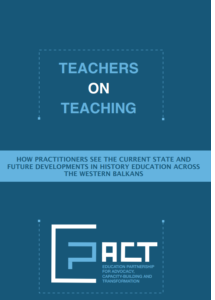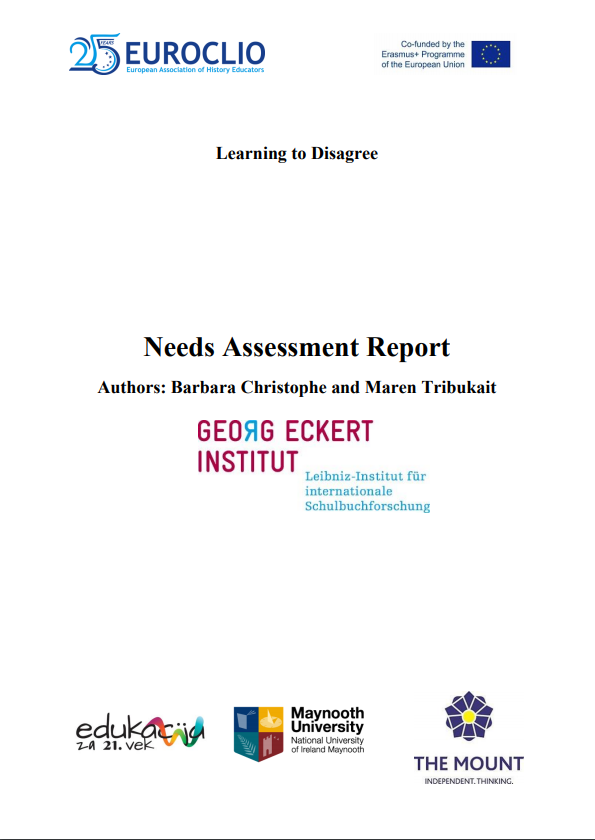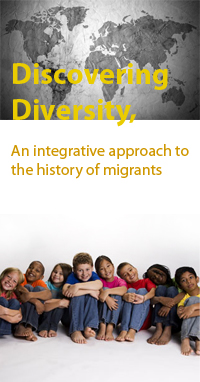Summary
This practice’s aim is to break down students’ passivity during (history) lessons. I developed it while teaching in one of Wrocław’s high schools, where I struggled with pupils’ low interest in history. Taking inspiration from public historians who involve the public in the creation of stories about the past, I involved my students in lesson planning. The practice takes approximately five minutes: a teacher let pupils choose two aspects that they would like to know more about on a specific topic and the two that they find uninteresting. Based on their responses, s/he plans the next lesson.
The practice
Public historians make history more inclusive by working on it for and with the public, addressing people’s interests and needs. Teachers can also reach for participatory practices in the classroom to increase student engagement.
This practice’s aim is to break down students’ passivity during (history) lessons by giving them the opportunity to decide what they learn about. It may be used with individuals, groups and whole classes and is applicable in both primary and secondary education (10-18 year olds).
It takes approximately five minutes and should be carried out in person or remotely before the planned lesson, with enough time for a teacher to prepare. Students open their textbooks and after skimming a chapter indicated by the teacher, they write on small pieces of paper/post-ins (or using Padlet online) two issues that interested them the most and the two which they do not want to learn about. If the topic is given and students search for information on the internet, they look only for interesting ideas (otherwise it would be too time-consuming). The teacher announces the results via e-mail, a learning platform or begins the next lesson by displaying them.
The class on the reign of Augustus II in the Polish-Lithuanian Commonwealth that I conducted in May 2022 will serve as example. The most frequent responses concerning interesting ideas were: Great Northern War (1700–1721), Silent Sejm (1717), the Tumult of Thorn (executions of Protestants in 1724) and so-called double election after the death of Augustus II. Most of the pupils did not want to concentrate on the king, his political decisions, as well as internal and foreign affairs of the country. I planned the next lesson around the Silent Sejm − as the topic is controversial, interpreted differently in the past and nowadays, I could design activities developing critical thinking. In addition, by focusing on the Sejm, I was able to relate to the internal and international situation of the Polish-Lithuanian Commonwealth at the time, which is the main requirement in the curriculum of the Polish Ministry of Education and Science.
I introduced the topic briefly, referring to Augustus II (the Sejm was convened to put an end to his fights with the nobility) and the Great Northern War (the Sejm took place during the conflict). Then, students compared narratives about the Sejm in a history textbook from 1908 (according to which deputies stayed silent because the Russian ambassador wanted them to do so), their textbook/Wikipedia (which mention that the Sejm was called “silent” because the nobles were afraid that it would fail, without any further explanation) and a podcast by the historian Adam Perłakowski on YouTube (who explains that deputies agreed on the laws to be adopted beforehand to prevent the use of liberum veto, which would have ended the assembly and nullified all the reforms; he also gives arguments undermining the significance of the Russian ambassador’s actions). Pupils were to decide which narrative was the most convincing for them, plus justify why, and look for possible reasons why past and present interpretations differ (historians did not have access to sources for many years; in 19th and 20th centuries Poles saw in Russia an invader who had always wanted to seize the country). As the Sejm implemented laws excluding non-Catholics from the political life, at the end I could also make a connection to the Tumult of Thorn (both Catholics and Protestants were involved but only the latter were punished which confirms the decline of tolerance in a country which until recently was famous for it).
Dorota Wiśniewska is an assistant professor at the Historical Institute, University of Wrocław, Poland. She has authored on-line teaching materials for secondary schools in the Polish language, for “NO to Disinformation” project of the Institute of European Network Remembrance and Solidarity, and for “On-line Teaching in the Visegrad Region” led by EuroClio. She has initiated and coordinated Public History Summer School organized yearly since 2018 in Wrocław (and on-line) and co-edited (with Joanna Wojdon) “Public in Public History” (Routledge, 2021).
As a teacher in one of Wrocław’s high schools, I met with strong aversion to history, particularly among students who chose math and physics as their major subjects. They had two lessons of history per week which they regarded as a waste of time. I tried to make my classes more attractive by using activating methods and including sources, images, movies, podcasts, etc., but this did not seem to help much. Inspired by participatory practices of public historians, I let my students decide what they would learn about.
Obstacles and lessons learned
By letting my students choose the topics of their lessons, without too much effort, I found out what their interests were and gave them a sense of agency. I learned that in general they are interested in everyday life in the past, military history, art, fashion, and traces of the past in the contemporary public sphere. They want to observe processes − causes and consequences, continuity and change – and talk about controversial topics. Very often students would like to learn about scandalous events, curiosities, fun and shocking facts. As long as they are not too numerous, we can use them as introductory hooks or refer to them during the lesson. With subjects that in general meet with great interest, for instance The American and French Revolutions or WWII, it may be difficult to quickly decide which aspects should be covered next time. In this case the teacher makes a final choice or holds a vote among pupils. The approach may appear demanding and time-consuming, as the teacher needs to plan the lesson based on pupils’ interests, but in practice existing plans can be easily adapted. And involving students in lesson planning can provide inspiration for new, engaging activities.
The effect of the practice
Students who participated in the lesson on Augustus II appreciated that they had influence on the course of it. Even if I eventually referred to issues they did not want to hear about, they were given the opportunity to set the main focus. Teachers in Poland often conduct lessons by sticking to the textbook because they believe this is how they meet the ministerial requirements. The practice shows that we can use the textbook to let students choose what they want to concentrate on during the lesson and structure it in such a way that we satisfy the imposed requirements, keep students engaged and practice analytical thinking. I used the practice on an irregular basis, because I assumed that frequent repetition would make it a routine (predictability is fine, but it can get boring). Nevertheless, even during classes fully planned by myself I observed increased motivation for learning among pupils. Having done this activity a few times, I simply got to know the group’s interests and was able to address them without asking for opinions each time.
The research in education proves that giving students choice make them active participants in the classroom. About opportunities and threats of this approach see for instance the article by Frieda Parker, Jodie Novak, and Tonya Bartell.
For more information about participatory practices in public history see for example Laura King, Gary Rivett, Engaging People in Making History: Impact, Public Engagement and the World Beyond the Campus, History Workshop Journal, Volume 80, Issue 1, Autumn 2015, Pages 218–233. And on connections between public history and history didactics: David Dean, Joanna Wojdon: Public History and History Didactics: A Conversation. In: Public History Weekly, Volume 5, Issue 9, 2017.





